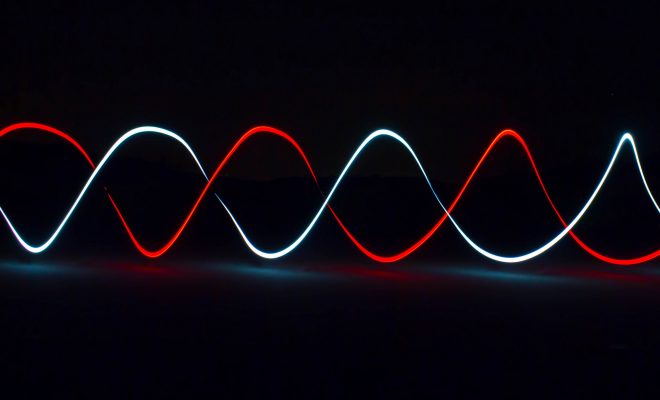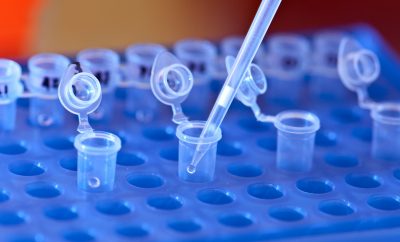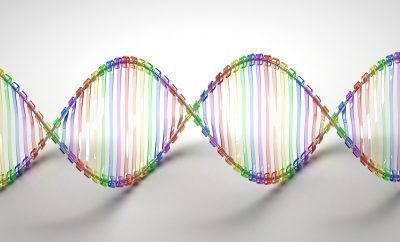 Image courtesy of [Thomas Wensing via Flickr]
Image courtesy of [Thomas Wensing via Flickr]
Law
DNA Testing and Criminal Law: Not Always a Perfect Match
Watch any legal drama on TV — Criminal Minds, Law and Order, CSI, NCIS — and you’ll probably see at least a few suspects caught, or exonerated, through DNA testing. But how is DNA testing actually used in the real world? Read on to learn about DNA testing, its benefits, and its problems.
What is DNA testing?
DNA evidence is used to identify criminals or exonerate the falsely accused. Its technological advancement has led to widespread acceptance in crime scenes across the country. Today, the federal government and twenty six state governments allow genetic swabs to be taken without a warrant. In June 2013, the Supreme Court ruled that DNA could be tested after an arrest, before a trial and conviction.
“When officers make an arrest supported by probable cause to hold for a serious offense and they bring the suspect to the station to be detained in custody, taking and analyzing a cheek swab of the arrestee’s DNA is, like fingerprinting and photographing, a legitimate police booking procedure that is reasonable under the Fourth Amendment,” the majority wrote.
What are the arguments for DNA testing?
Proponents tout the advantages of DNA testing such as helping solve difficult cases and exonerating the wrongfully accused. According to the Innocence Project, more than three hundred wrongfully convicted individuals have been freed due to post-exoneration DNA testing. The government has created grants to help fund the research and development of DNA testing. It is especially helpful in identifying missing persons, solving cold cases, forensic backlog reduction and conviction accuracy. It has been called the most significant advance in criminal investigation because it ultimately leads to a higher rate of accuracy keeping dangerous criminals off the street.
DNA evidence most often remedies cases in which there was:
- Eyewitness Misidentification or Lying: Often, juries and judges listen to an eyewitness, especially if they seem confident, compelling, or convincing. However, as humans we aren’t perfect, and it’s entirely possible that eyewitnesses can make mistakes. Witnesses can also lie, possibly because they were coerced to do so. Informants are sometimes used in criminal trials, but they’re not always the most valuable witnesses because they’re usually testifying because they will get something out of it, such as a reduced sentence of their own.
- Forensic Mistake: There are some forensic techniques, especially older and more technologically rudimentary forensic testing methods that seem sound but actually have never been fully subjected to rigorous review. These can include things such as bite mark and shoe mark comparisons.
- False Confessions: It is also possible that a defendant lies. Whether out of confusion, coercion, fear, or any other reason, DNA has revealed that a confession was fabricated.
- Police or other law enforcement mistake: Police officers are also fallible. Whether mistakes are accidental or made on purpose varies, but it’s entirely possible that a police officer could make a mistake by not paying attention, due to corruption, or personal biases. DNA testing can help sort out where those mistakes were made.
- Lawyer Mistakes: Lawyers also aren’t perfect. Public defenders don’t always have the time or resources to launch a full defense, which can lead to false convictions.
What are the arguments against forensic DNA testing?
Opponents are concerned about the credibility of the process surrounding DNA testing. An investigation of eight hundred and forty three rape cases revealed that the technician had failed to document DNA evidence in twenty six sexual assault cases and had assigned the evidence to the wrong case in twenty six instances. Scientists have also reported that it is possible to fabricate blood and saliva samples containing DNA, essentially giving someone the ability to engineer an entire crime scene.
There have also been arguments against the way in which we as a state hoard DNA. Often when people are arrested, a DNA sample is collected, just like fingerprints are taken. But collecting the DNA isn’t always that effective. For example in 2011, the state of Maryland collected roughly 11,000 DNA samples, and less than 20 led to an arrest. Although there is limited and restricted access to DNA storage systems, they may get hacked or leaked by government officials who access these every day. Crime lab testing in general has numerous reports of sloppiness, inadequate training, and bias throughout the country.
Case Study
Michael Phillips
Michael Phillips was accused of raping a young woman in 1990. He pled guilty, not because he was guilty but because of the advice of his attorney. Phillips was a black man, the victim a white woman. And in Texas, a jury trial probably would have convicted him and sentenced him to a much worse punishment than what he received by pleading guilty. The young woman had also picked him out of a lineup, making the likelihood that he would be found guilty through a jury trial even more likely.
He was exonerated through DNA testing almost 25 years later. Through DNA testing of the rape kit performed on the victim, officials were able to determine that another man had raped the victim. Craig Watkins, the Dallas County District Attorney, released a statement saying:
DNA tells the truth, so this was another case of eyewitness misidentification where one individual’s life was wrongfully snatched and a violent criminal was allowed to go free. We apologize to Michael Phillips for a criminal justice system that failed him.
Conclusion
DNA testing is an important tool that can be used to find the guilty party and rule out those who have not committed the crime. But it’s not a magical solution to all law enforcement problems. It needs to be used carefully and responsibly to make sure that our criminal justice system is always fair.
Resources
Primary
ABA: Standards on DNA Evidence
National Institute of Justice: DNA Initiative
Additional
CNN: Supreme Court: DNA swab after arrest is legitimate search
DNA Resource: Forensic DNA Policy
Law Office of Kevin P. O’Donnell: Is DNA Evidence Always As reliable As We Think?
The New York Times: DNA Evidence Can Be Fabricated, Scientists Show
FSI Genetics: Authentication of forensic DNA samples
NOLO: DNA Evidence in Criminal Cases
Lawyers: Use of DNA in Criminal Investigations








Comments